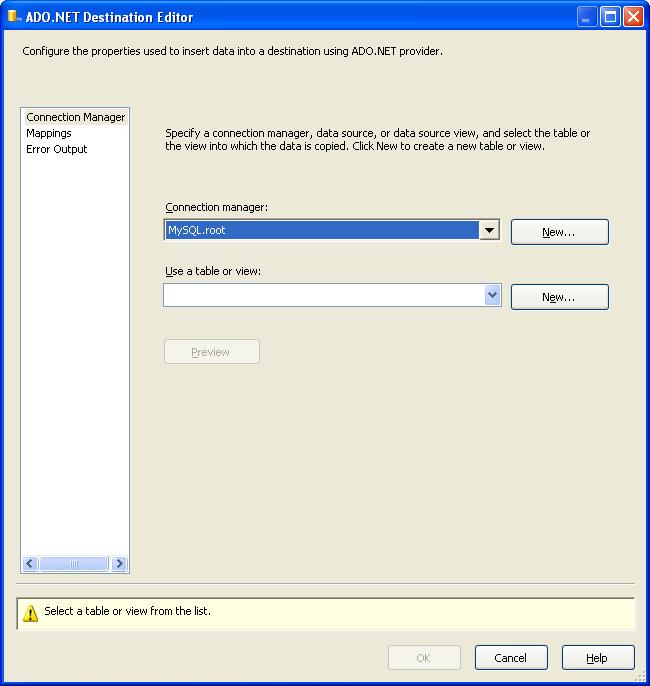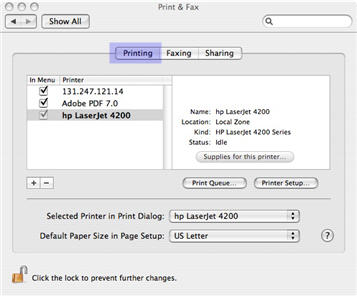I just purchased Acrobat Pro DC for Mac. Was provided with a download link Via email. When I clicked on it, downloaded and opened the application, I received a message saying 'Download cannot continue. Contact Adobe support. Email redsupport@arvatousa.com '. When I emailed that address, the mail was undeliverable as the address was invalid.
- When I try to watch a video from the Internet, it says that I must download Adobe Flash Player. I tried that, but it does not work. It acts like it is starting to download, but it just sits there forever. I thought maybe it is because I already have Adobe Flash Player on my computer.
- If you do not have the latest version installed, download the needed installer from the following locations: Adobe Reader full installers and updates for Mac OS. Adobe Acrobat updates for Mac OS. Click the installer to start the installation process.
Windows users: If you are on a Windows computer, see Troubleshoot Adobe Reader installation | Windows.

Make sure that your system meets the minimum system requirements for Reader.
If one of the following errors occurs when you try to connect to or download from the Adobe website, work through the tasks below.
- Nothing happens.
- A file stops downloading prematurely.
- Any of the following errors occur:
'The server returned extended information.'
'Connection failure has interrupted the download. Check your Internet settings and click Retry.'
'Cannot connect to server, server cannot be found.'
Try to download Adobe Reader again by clicking the Download button.
2. Make sure that your Internet connection is stable.
An unstable Internet connection can prevent you from downloading from other websites. Try downloading a file from another website, such as www.microsoft.com, www.apple.com, or www.mozilla.com. If the problem persists, contact your network administrator, help desk resource, or Internet service provider (ISP). See Resolve an unstable Internet connection to the Adobe website or FTP site for details.
After you establish a stable Internet connection, try to download the file again. If the original attempt to download the file was interrupted, restart the download process within the web browser you were using.
3. Download when there is less activity on the Internet.
A high volume of activity can interfere with an Internet connection. For best results, try to download files when there is less activity (for example, late in the evening, early in the morning, or on weekends).
Try downloading the Adobe Reader installer directly.
5. Make sure that JavaScript is enabled in your browser.
The JavaScript option is a preference setting in your browser. Follow the instructions below for your browser.
Open the Safari preferences (choose Safari > Preferences).
- Make sure that Enable JavaScript is selected in the Safari Security Preferences tab.
Go to the Reader download page, and try downloading Reader again.
For step-by-step instructions, see Install Adobe Acrobat Reader DC | Mac OS.
JavaScript is enabled by default in Firefox and requires no additional installation. For more information, see the Mozilla Support page JavaScript settings and preferences for interactive web pages.
Open the Chrome preferences (choose Chrome > Preferences).
Click Show advanced settings at the bottom of the page.
Make sure that Allow all sites to run JavaScript is selected, and then click OK.
Go to the Reader download page, and try downloading Reader again.
For step-by-step instructions, see Install Adobe Acrobat Reader DC | Mac OS.

In case you are prompted to enter
If you do not remember your password, refer the Apple document: https://support.apple.com/en-in/HT202860.
Visit the forums. See if other users are experiencing similar download and installation problems by visiting the Reader user-to-user forum. Try posting your problem on the forums for interactive troubleshooting. When posting on forums, include your operating system and your product's version number.
More like this
Download Adobe Reader
Get all best apps via Setapp
By the simple virtue of browsing the web over the years, nearly all of us have seen a variety of pop-ups asking us to download or upgrade Flash Player for Mac. Usually, there’s little explanation involved, which leaves you thinking, “Do I really need to install Adobe Flash Player on Mac?”
Adobe Flash is a proprietary software that started in the late ‘90s as a way to include advanced interactivity, gaming functionality, and video capability into your browser. By the early 2000s, Flash was supported by every major browser and seemingly ran the internet. That is until Steve Jobs himself declared a war on it.
In a press release published by Apple in 2010, Steve Jobs laid out his reasons for not integrating Adobe Flash in the Safari browser by default. His main criticisms of the platform were its closed proprietary nature, slow updates, weak security, and increasing availability of open standards that were arguably better equipped to handle browser interactivity.
For a long time, Adobe Flash security issues were the primary reason most developers discouraged people from installing the application. As you may have noticed, oftentimes Adobe Flash Player download for Mac pop-ups haunt you on the least trustworthy websites. It’s highly likely that those were hackers using Adobe Flash installers to find a way into your system.
Fortunately, in the last 10 years, the popularity of Adobe Flash has decreased significantly. By now, 95% of all websites have switched to the open HTML5 standard. This even includes all the major video companies, such as Vimeo, Netflix, Facebook, and YouTube. In fact, the popularity of the Flash technology has declined so much now that Adobe decided to end its Flash support in 2020.
So is Adobe Flash Player safe? Generally, yes, given that you download Flash Player for Mac from Adobe’s official website. And sometimes there is no way around installing Flash as you might still need it to run that lagging 5% of the web properly. Whatever the reason, below we’ll discuss how to manage Adobe Flash safely and securely.
Mac problem that needs a quick fix?
/cdn.vox-cdn.com/uploads/chorus_image/image/64042296/MAS_Discover_LRjp.0.jpg)
Get Setapp and install 150+ apps in one pack, a solution catering for every issue you have with your Mac.
How To Install Adobe Flash Player On Mac
If you absolutely need to download Adobe Flash Player for Mac, you should at the very least do it securely. Good tips to note are install Flash only when required, disable it when not in use, update it regularly to get the latest security patches, and delete it completely as soon as you can make the full switch to more modern web technologies.
Safely install Adobe Flash Player on Mac
If there would be only one takeaway from reading this article, it should be: never ever download Flash Player for Mac from unrecognized websites.
Using Macs in general is very safe. But by far the most popular way for hackers to get into your system is to persuade you to download malware that’s masking itself as a well-known program. And Flash Player for Mac tops the list, having the worst security record out of any software. Moreover, Adobe Flash is the number one reason Macs crash overall.
So when you are about to install Adobe Flash Player on Mac, you should:
Go to get.adobe.com/flashplayer (this is the only official Flash Player for Mac distributor)
Click “Download now”
Navigate to your Downloads folder and open the .dmg file
Proceed through the installation instructions
Restart the browser, after which Adobe Flash Player for Mac should be activated
Update Adobe Flash Player for Mac regularly
Once you have Flash Player installed, you need to remember to update it regularly (e.g. once a month) to avoid any security issues. To check whether there’s a new version of Flash available:
Open System Preferences
Click on the Flash Player and navigate to the Updates tab
Select Check Now or Install Now if there’s an update available
Disable Flash when not in use
When you encounter a website that doesn’t work properly without Flash, proceed to install the player from the official (very important) website as per the steps above. But for complete security, turn off Flash right after you use it and enable it only when there’s no workaround.
To disable Flash Player for Mac in Safari:
Go to Preferences and then Websites
Scroll down to Plug-ins and uncheck the Adobe Flash Player
Similarly, disabling Flash can be done in Content Settings in Chrome and Addons > Plugins in Firefox.
Completely uninstall Flash Player for Mac
There’s a lot of confusion with regards to deleting Flash Player. As we’ve seen, when you download Flash Player for Mac, it doesn’t install itself as an app, but rather integrates into your System Preferences.
Download Adobe Acrobat
Hence removing Flash Player is not as easy as just dragging it to the Trash. Adobe has a whole page devoted to the uninstallation process and makes you download a separate tool to delete Flash properly.
To remove Flash Player the Adobe way:
Download the uninstaller for your macOS
Launch it as any app and follow the instructions
Restart your Mac
However, due to the Flash Player’s pervasive presence on your Mac, it’s highly recommended that you use a professional third-party uninstaller like CleanMyMac X.
Get a pro uninstaller for Mac
With CleanMyMac X, unneeded software and junk will be gone from your computer in a single cleanup. An all-mighty cleaner that deserves your attention.
To uninstall Adobe Flash Player on Mac with CleanMyMac X:
Why Can't I Download Adobe On My Macbook
Navigate to the Uninstaller tab
Select Adobe from Vendors
Check the box next to Flash Player and click Uninstall
Recover files lost to Flash Player
Sometimes you simply can’t prevent the malware from getting into your system. And most of the time you only realize that infiltration happened after the fact, when you discover some of your files completely gone.
Good news is you might be able to recover your files if you act quickly. As soon as you notice any files missing, install a professional Mac recovery app like Disk Drill and follow this process:
Launch Disk Drill app from Applications
Find your hard drive in the list and click Recover
Choose one of the recommended options, from disabling system protection to connecting another Mac, to allow Disk Drill to recover lost files
Finally, to stop compromised apps or files from getting into your system, use a malware protection utility in CleanMyMac X on a regular basis.
To scan your Mac for viruses with CleanMyMac X:
Select the Malware Removal tab
Click Scan
Delete anything suspicious that shows up in the report
Overall, there are very few reasons to download Flash Player for Mac today. Nearly all modern websites have switched to community-supported standards like HTML5, CSS3, and JavaScript. But if you need to use Flash, make sure to download it from the official source and turn it off when not required to protect yourself from its security flaws.
In addition, make sure you’re fully protected from any worst-case scenarios by checking for malware with CleanMyMac X and recovering lost files with Disk Drill. And if you use Google Chrome, you can avoid Adobe Flash Player download for Mac altogether as it comes pre-installed in the browser.
Don’t feel like spending money on buying all the professional apps? Both CleanMyMac X and Disk Drill are available for you to try for free, along with more than 150 high-end Mac apps and utilities, through Setapp — the best platform for curated Mac apps. Adobe Flash might be on its way out, but in the meantime, you should definitely verify that you’ve been using it responsibly all this time.

Meantime, prepare for all the awesome things you can do with Setapp.
Read onSign Up
